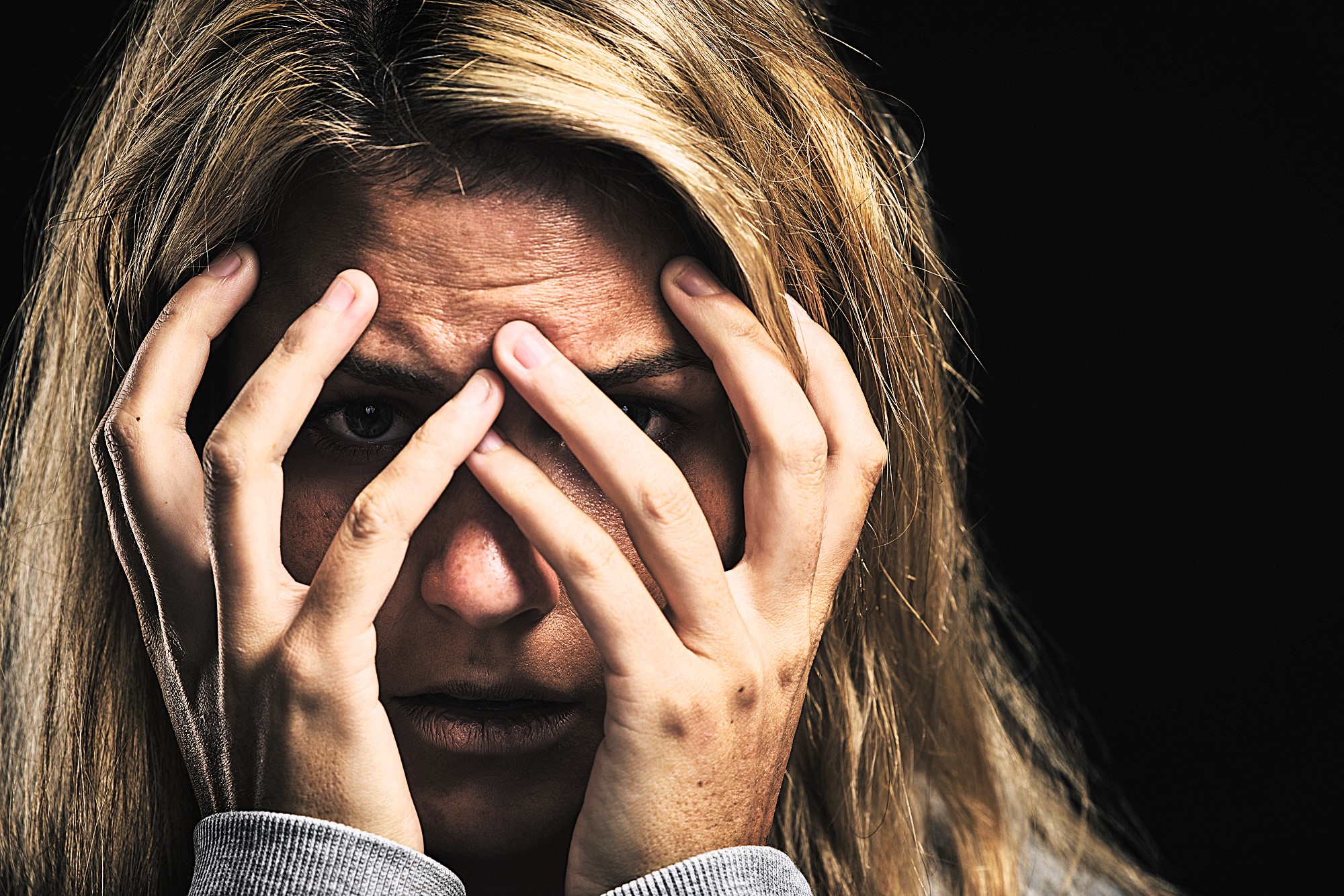What is toxic shame?

Shame is a perfectly normal emotion to feel when confronted with your own negative actions. It’s normal to feel shame for a few hours or even days after doing something negative that invokes that feeling.
Toxic shame is different. Toxic shame is persistent, even chronic in the sense that even though it may not always be felt, it will most likely always come back unless treatment is sought.
If you feel like shame has a disproportionately large impact on your thoughts and actions, you may be suffering from toxic shame. Here are 15 other signs to look out for that people who experience toxic shame often display.
1. There is often not an external trigger to bring on feelings of shame.

A person who is living with toxic shame will not need an external trigger to cause their shame. Their own thoughts can bring on those feelings, sometimes without there being a real correlation between an event and the feelings.
Or, if there is an event, it may not be shameful at all. Instead, it’s tapping on those feelings of inadequacy, which sets off a shame spiral.
2. They experience shame spirals that lead to extremely unhealthy thinking.

A shame spiral goes much further than what one would expect from just experiencing shame. The person might experience severe depression, despair, and hopelessness because of their shame as more time goes on, and their thoughts continue on.
3. There is often a “shame story” involved.

The shame story of a person is how their mind justifies the negative feelings they have about themselves. That may include thinking things like, “X person was right about me, I am trash.”
Statements and narratives surrounding those thoughts often point back to the source of the shame. That may include events in one’s childhood, dealing with substance abuse disorders, or a destructive relationship.
4. Natural occurrences of shame are longer and more intense than regular shame.

It’s natural to experience shame when we do something we aren’t proud of. A person without toxic shame will typically not feel shame for longer than a few days or when they make amends for their action.
People with toxic shame will experience it much longer, even if they fix the problem that inspired the original feelings of shame. The intensity of those feelings may be overwhelming.
5. They may also feel inadequate.

Inadequacy is a struggle for people with toxic shame. They may never or rarely feel like they are good enough for success, for other people, or for the good things that can happen in life. They will often feel undeserving and like they need to earn their place within a relationship.
These types of feelings can fuel codependency and lock that person into unhealthy relationship patterns until they can break their cycle.
6. They may experience “shame anxiety.”

A person may fear the feeling of shame and become focused on trying not to experience those feelings. This may look like overcompensation in relationships, excessively apologizing to other people even if no wrong has been committed, or before a wrong has been committed.
The person will make changes to the way they conduct their life to avoid the potential for shame, like not taking calculated risks, not applying for promotions, not asking someone out on a date, and people-pleasing.
7. They have consistent negative self-talk and shame-based beliefs.

Negative self-talk and shame-based beliefs sound something like this:
– I’m a trash person.
– I am unlovable.
– I am unattractive.
– I’m not good enough.
– I wish I didn’t exist.
– I shouldn’t have been born.
– I am stupid, ignorant, or worthless.
– I’m a phony, a fraud.
– I’ll always be a terrible person.
These are examples of cognitive distortions in which people have an inaccurate view of reality that is most often negative. They are also examples of all-or-nothing thinking (also called black-and-white thinking, or splitting) whereby a person thinks in extremes. There is little room for any positivity or neutrality when this type of thinking is present.
8. They excessively idealize others.

An unhealthy, excessive idealization of other people can point to toxic shame. That is when a person thinks of other people as much better than they are due to whatever qualities they believe these people have.
A person may tell themselves that other people are more attractive, smarter, or better. They may feel that they can never measure up to this impossible standard that they are setting for themselves. That is by design of their avoidance of shame.
There’s a smaller chance of feeling shame for not having succeeded if they set the bar so far out of reach that they can’t believe it’s possible for anyone but the most skilled to reach it. That idealization becomes an unhealthy defensive mechanism that gives them permission to not try.
It’s a form of inferiority complex that serves to protect the person from undue self-criticism because they feel they could never achieve anything of great merit or worth.
9. They experience extreme reactions to any form of criticism.

Criticism can be valid, constructive, and delivered in a positive way. Or it might not be valid and be delivered in a harsh way. In either case, a person experiencing toxic shame will take it very badly.
They see criticism as a black mark against who they are as a person. This is because they already have such a low regard for themselves that they struggle to see it any other way. The person delivering the criticism may be trying to help them grow and improve their skills, but the person with toxic shame will not see it that way.
The ashamed person may feel as though the other person does not like them, even when that is not the case. They may take the words to heart, equating criticism of how they did something with who they are and their worth as a person.
10. They maintain secrecy around their shame.

When a person experiences chronic shame, they may hide things from their past and not share them with anyone, even those closest to them. They do not want other people to look at them differently because of something they did or that happened to them.
They may not talk about events from the particular period in their life when their shame first formed, even if those events are not directly related to their shame. They hide that entire period so as not to risk anyone finding out why they feel shame.
11. They may identify as a victim.

There is a good chance that if someone experiences toxic shame, they were a victim of some objectionable treatment or event at some point in their life, whether that was as a child of unloving parents or as someone who suffered a crime, for example.
But this person lives with a victim mentality that not only relates to events from the past, but to how they are treated by others now, and to how life treats them in general. They see themselves as being treated unfairly even when that is not the case.
This is a way for them to avoid blame or responsibility when things go wrong, which would only lead to more shame. It may also be a mechanism for them to self-soothe in their self-pity because this is where they feel comfortable, even though it is not where they likely wish to be.
12. They experience anger and aggression toward themselves and others.

When a person feels shame for a prolonged period, it may be accompanied by angry reactions to events or aggression toward themselves and/or other people.
Where anger is focused on themselves, it is often a result of a situation where their efforts did not lead to the outcomes they were hoping for and their negative self-talk then fuels feelings of self-loathing and internal rage.
This may also lead to aggression toward others as they project their feelings onto those around them.
13. They experience guilt, self-blame, and remorse.

If a person is deeply ashamed of something they did, they will likely harbor guilty feelings too. They may feel remorse and even show remorse for their actions.
But it is also possible that a person may blame themselves for something that happened which was entirely out of their control. They may feel guilty for the way they were treated or for something that happened to them. They may have such a low opinion of themselves that they believe they deserve those things.
14. They may feel a lack of belonging.

Where a person’s toxic shame stems from mobbing (bullying by a group of people) or from a religious upbringing that they have now turned away from, that person may not feel like they belong anywhere.
Bullying can make a person feel rejected or excluded, not only by the person or group who is bullying them but by others too. They may not be able to relate to people who have not experienced that form of abuse.
When a person leaves a strict religious society, it can leave a hole where they once felt like they belonged. They no longer have that religion or those people to call family or friends, and they may find it difficult to make new friends initially because of their unusual upbringing.
So what causes toxic shame?

Toxic shame is often rooted in childhood abuse and neglect, where the child was made to feel rejected, neglected, or unaccepted by their parents. The parent might have been absent, negligent, a substance abuser, mentally ill, or otherwise too overwhelmed by their own problems to be a present and loving parent.
Often, the shame is reinforced through repeated exposure to treatment that may not, in isolation, be enough to cause shame. It is the cumulative effects that eventually lead to the formation of toxic shame.
The child may have been subject to constant criticism, regardless of how they performed or what they achieved. This wears down the child’s self-esteem and self-worth and makes them feel like they don’t make their parents proud. This is reflected in their own lack of pride.
The child may also have been made the family scapegoat. They may have been blamed for anything and everything regardless of the role they played in events. This can happen in various family dynamics, but is especially common in families with at least one narcissistic parent.
It may also be caused by a traumatic experience, such as being the victim of a crime (particularly a sexual crime). Matters can be made worse when there is an element of victim shaming involved, and if the perpetrators are identified but no conviction is achieved or even sought.
Repeated humiliation is another reason why shame may become toxic. If a person is subject to shameful situations by a parent or abusive partner, for example, it can lead to deep-seated feelings of self-disgust. This can include public humiliation which can be verbal or physical.
Bullying, intimidation, and smear campaigns can manifest as humiliation or ridicule as well as physical aggression and violence. These chip away at a person’s self-confidence and self-worth.
Addiction can also be a cause of chronic shame. When a person is addicted to something, and their behavior breaks with social norms because of that addiction, it can impact their sense of self.
Finally, a strict religious upbringing can be a source of shame if a person finds it difficult to live up to the teachings they received when growing up. Parents and other members of the religious community may induce shame by citing religious doctrines if a person deviates from those rules. Long-lasting shame is also likely if a person seeks to leave – or successfully leaves – such a religious community.
The internalized shame that the person carries with them hangs around and warps their perception of themselves.
In some people, it can become their personality and be responsible for problems like codependency, PTSD, substance abuse, and depression. For others, it sits beneath the surface and can be triggered by mistakes or feelings of unworthiness.









